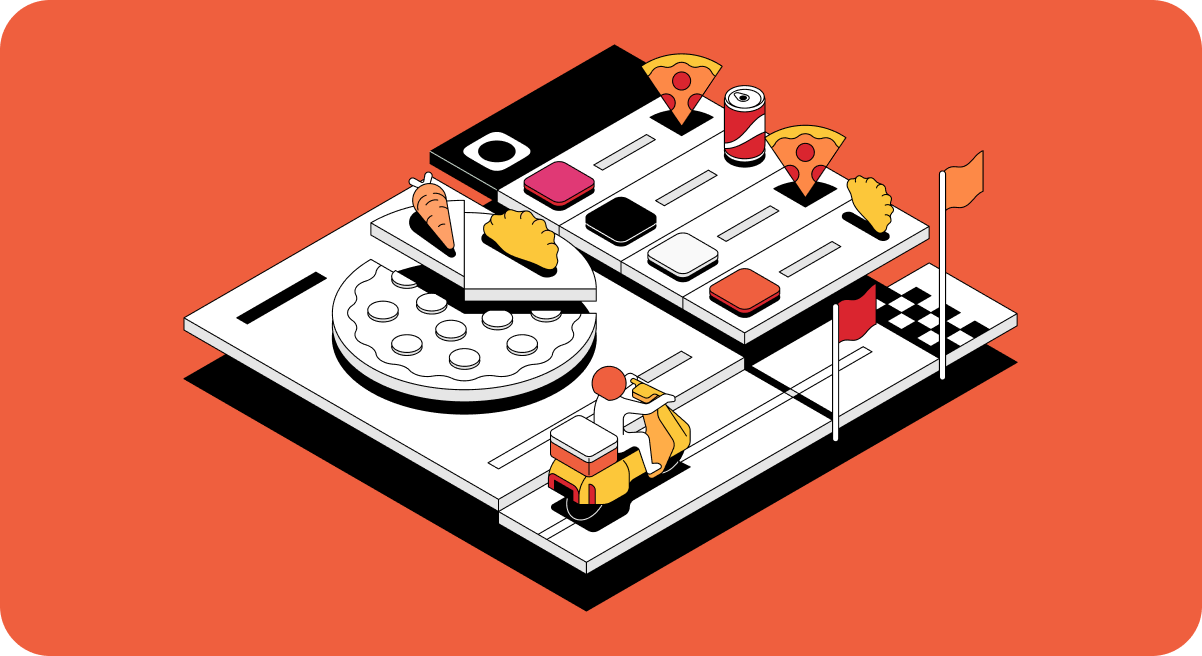
This is a complete list of effective ecommerce best practices to optimise your restaurants website.
As a restaurant owner, you know how much effort it takes to generate regular foot traffic and get your restaurant's name out there. In recent years, however, with the rise of delivery services and takeout as a real alternative to dining out, more and more restaurateurs have focused on generating website traffic for their websites.
While it may feel like an extension of your restaurant business, generating traffic for a website requires a whole new set of skills. In many ways, it's the same challenge brick-and-mortar stores faced when the online shopping boom began in the mid-2000s, when Amazon launched its Prime subscription service. At that time, many shop owners began to switch to ecommerce and build their digital marketing capabilities to stand out from the crowd and drive traffic to their online stores.
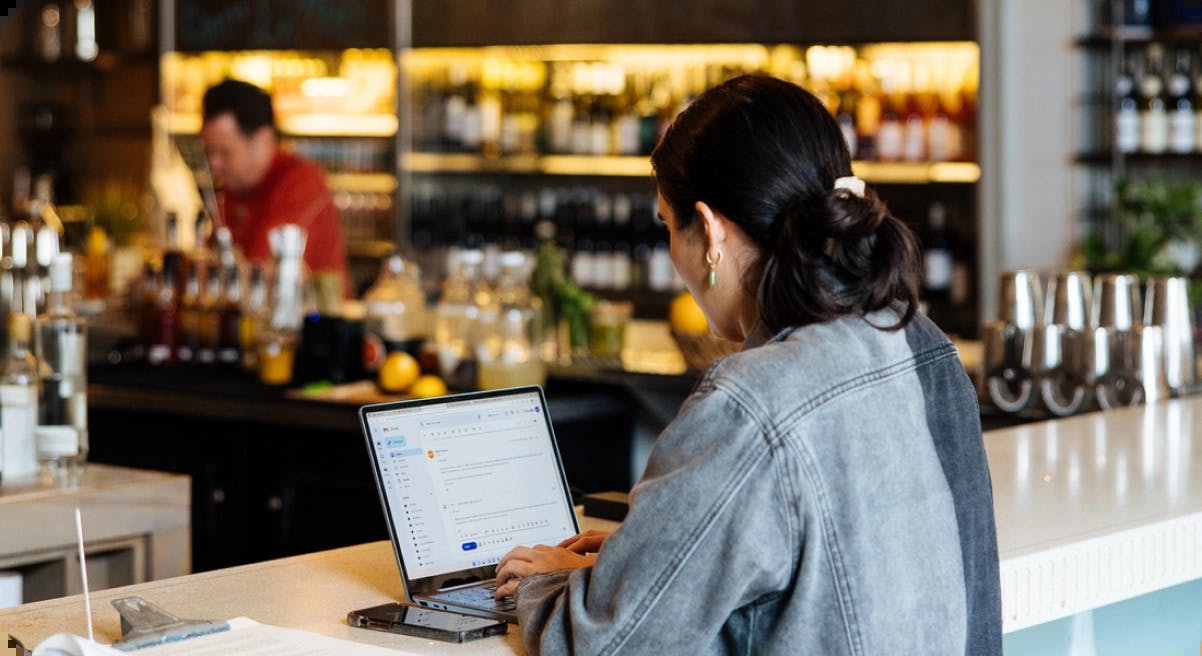
As the hospitality industry continues its migration towards digital, we want to help you navigate the world of online ordering by leveraging ecommerce best practices for your restaurant.
In this post, you'll learn how to use ecommerce best practices to optimise your restaurant's online ordering website, increase website traffic, and boost online delivery sales.
You'll learn:
- Practical tips on how to make your restaurant's ecommerce clear and easy to navigate
- How to create a quick and easy checkout process
- How to use email and social media to attract customers to your restaurant's ecommerce
- How to use promotions to convert visitors into customers
- and more!
Which brings us to...
Just like with delivery apps, crafting a menu on your online ordering website is a science that can make or break a potential sale.
Did you know that on delivery apps, a customer visits about six different restaurant pages before placing an order? Once they find a menu too complicated, they simply move on to the next restaurant.
The same principle applies to your restaurant's ecommerce. We recommend six main product categories with four to six products in each category, starting with your best sellers.
Your menu should look something like this:
- Category 1: Best-selling products
- Category 2: Main dishes
- Category 3: Side dishes/salads
- Category 4: Extras
- Category 5: Drinks
- Category 6: Desserts
Have a clear Call to Action (CTA)
A clear and obvious call to action helps your customers understand what you want them to do and provides them with a clear path to order from your website. Your CTA should be immediately visible to your website visitors when they enter your site. They should not have to look for it.
53% of businesses have CTAs that take their visitors more than 3 seconds to find, and a whopping 70% have no CTAs on their homepage at all. Your goal is to have a CTA on your website that is immediately visible and leads your potential customers to your product offering.
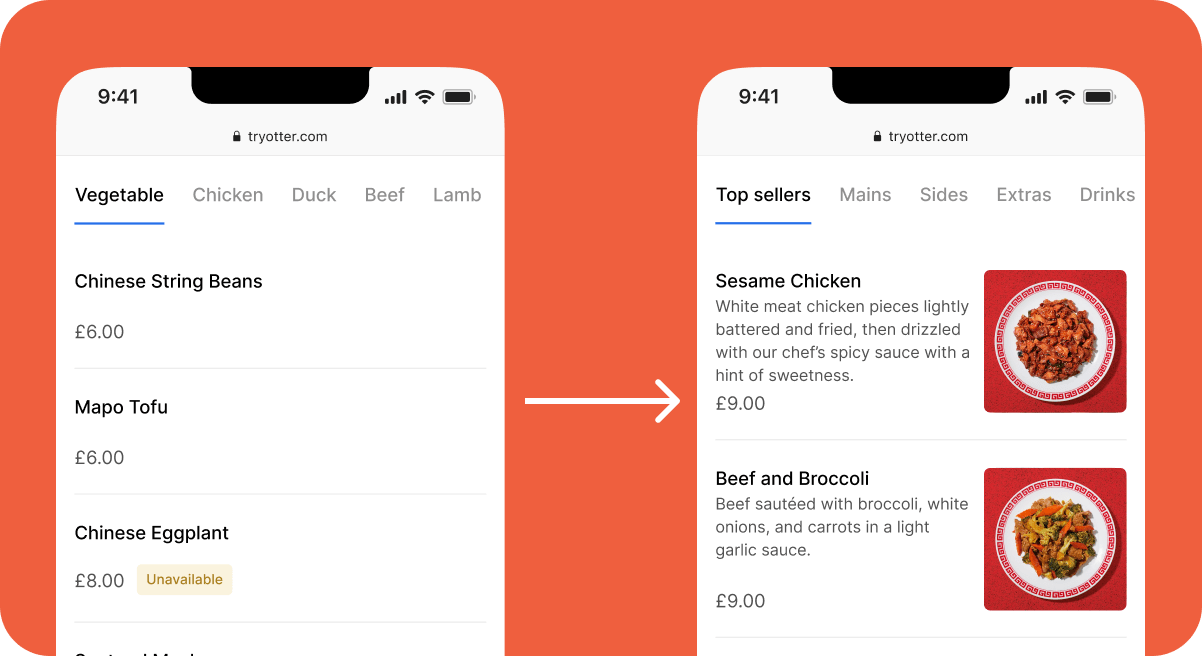
Write informative product descriptions
With an accurate and descriptive product description, you can entice your customers to buy and avoid errors and complaints.
Avoid spelling mistakes and writing in all caps and make your descriptions between 140 and 260 characters long.
You can also use emojis in your descriptions as they usually work well!
Display high-quality product images
While this may sound obvious, research has shown that by adding photos to your online menu, you can increase the average basket size. Menus with a photo per item receive more orders on average than menus that only show photos of the main dishes.
Adding mouthwatering pictures to your extras, side dishes, and especially desserts can entice customers to add another item to their order.
Setting up a direct ordering website can be a little complicated. Luckily, there are solutions like Otter's Direct Orders that can help you set up your direct ordering website and get orders in no time!
2. Create a quick and easy checkout process
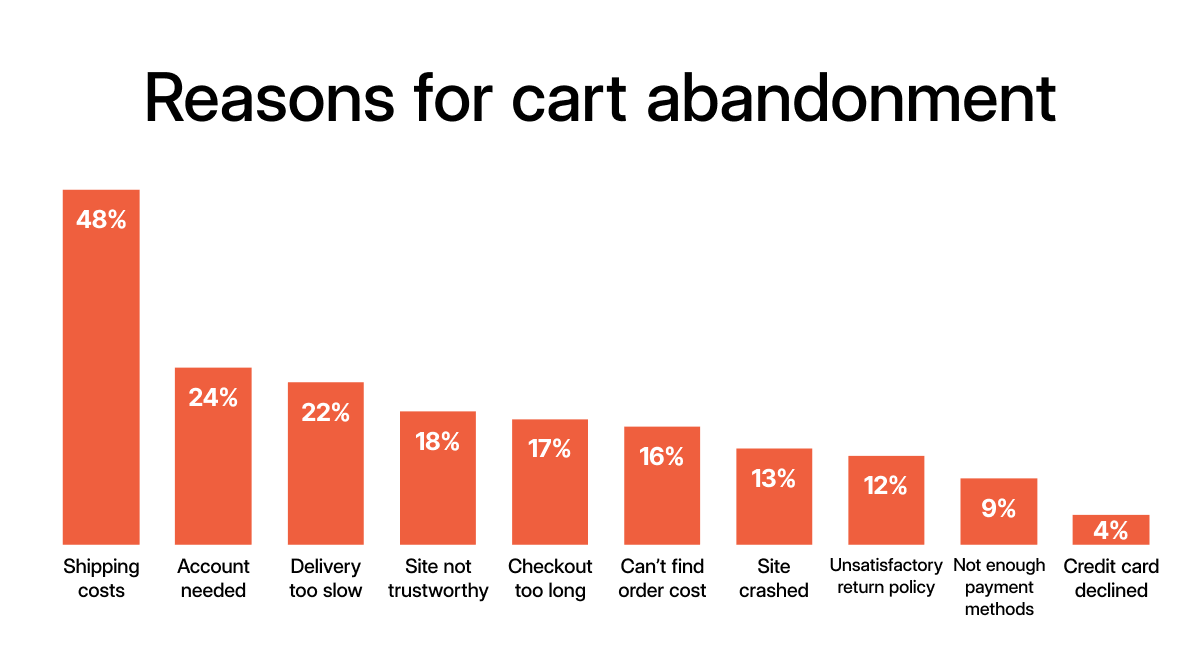
According to a study by the Baymard Institute, 69.99% of all shopping carts are abandoned. This means that a large majority of buyers do not complete their purchase, even though they show a real interest in the products.
The Baynard Institute has identified a number of reasons why customers abandon their shopping carts. Here are some of the main reasons and how you can avoid them.
Give shoppers the option to create an account (or not!)
According to the same Baynard Institute study, 24% of users who abandon their shopping cart say it's because the site prompted them to create an account to proceed with the order.
While asking your customers to create an account may be beneficial in many ways, it can also cost you some sales.
Offer your potential customers an express checkout option to capitalise on shoppers when their purchase intentions are at their highest.
Express checkout allows you to capture your customers' information, including their email addresses, without them having to go through the somewhat lengthy process of creating an account and signing up.
Accept as many secure payment options as possible
The Baynard Institute study also found that 18% of website visitors who abandon their cart say they did not trust the site with their credit card information, and 9% of visitors say the site does not offer their preferred payment method.
To avoid these types of complications, we recommend that you accept as many secure payment options as possible so that your customers feel safe paying with a method that does not require credit card information and works seamlessly, such as Apple Pay or Paypal.
Offer free shipping
The number one reason for website visitors to abandon their cart is being hit with unexpected costs at checkout (shipping fees and taxes).
One way to get around this problem is to offer free shipping over a certain price. This not only increases the average order value, but also removes the psychological barrier customers encounter at checkout when delivery costs are added.
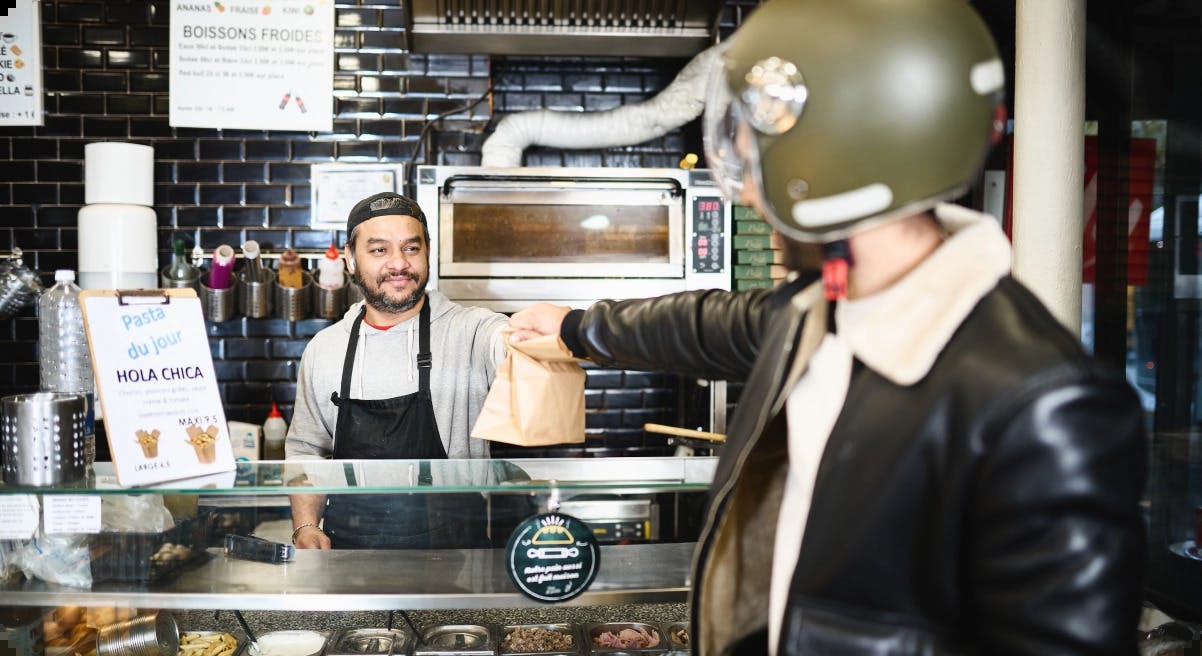
3. Have an email marketing strategy
In today's mobile era, email marketing is still a great way to get in touch with your customers. It allows you to connect with them through authentic content and helps your restaurant stay on top of their minds when ordering delivery.
Send cart abandonment emails
In ecommerce, cart abandonment emails are a great way to remind customers what they were shopping for and let them know they can pick up their session where they left off. This technique can also work when it comes to food delivery.
A strategically placed cart abandonment email at a time when food delivery orders are at their highest (such as on weekends) can help push an order through with ease.

Partner with food influencers
On Instagram, TikTok, and YouTube, there are a variety of accounts that review restaurants and showcase dishes. Most of these accounts are restricted geographically, meaning they only review restaurants in their city, which can make their follower base very interesting to you.
Partnering with local food influencer accounts is a great way to not only showcase your restaurant and products through the lens of an influencer, but can also help spread the word about a promotion your restaurant is running and directly drive website traffic.
5. Launch promotions
Promotions and discounts are great tools for converting leads into customers. No matter what sort of campaign you want to run on your restaurant's ecommerce, urgency is key.
Your promotions should send a message to your customers and inform them that this campaign is only running for a limited time. You can use plugin tools, such as adding a countdown timer to your website banner, to create a greater sense of urgency around your promotion or sale. Otter's Promotions solution is a great way to promote your restaurant across delivery platforms and manage your direct ordering coupons, all from one place.
Map out an ecommerce funnel for your restaurant
A funnel in marketing is a tool that tracks every stage of a customer journey, from when they first hear about a brand to when they make a purchase. In ecommerce, a funnel represents the steps a customer takes on your website until they make a purchase (and even beyond the purchase). The term funnel itself is used to visualise the number of users who go through the stages and to better understand and optimise each of them. These stages are also relevant for online delivery and understanding them better can help you increase your online delivery sales.
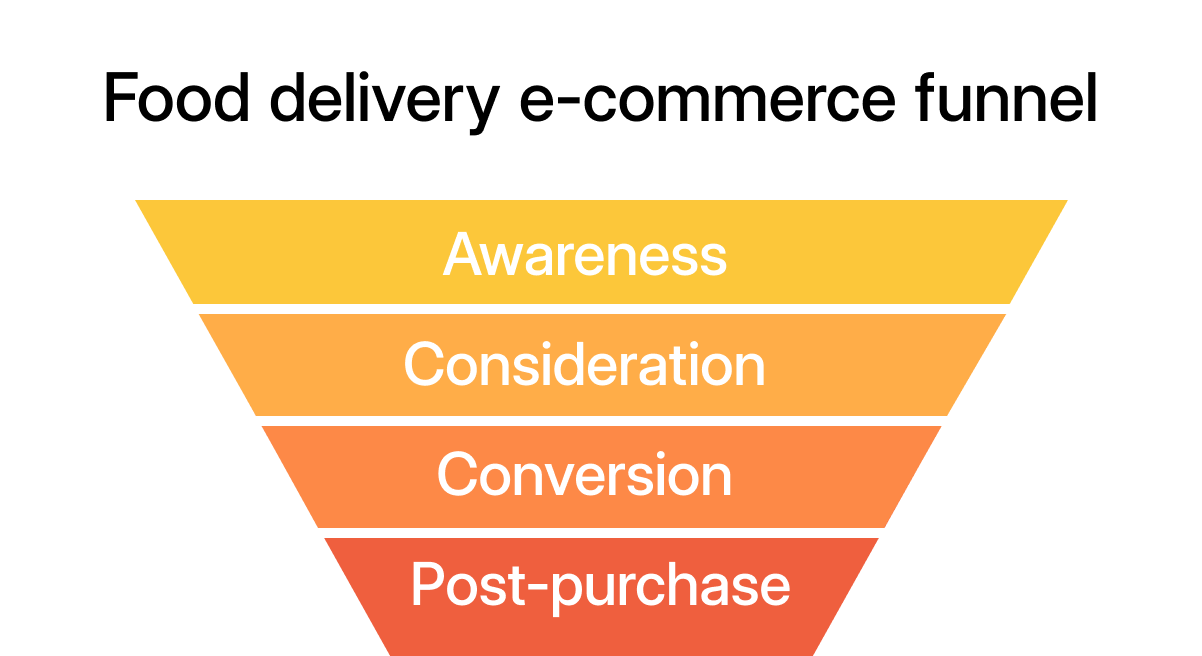
Awareness
This stage is at the top of the funnel. At this point in the journey, potential customers have heard about your restaurant, likely through your social media promotional efforts or through your partnerships with food influencers. At this stage, they have not shown any purchase intent, other than perhaps visiting your website for the first time to look around.
The awareness stage of the funnel is usually measured by the number of new users on your website.
Consideration
This stage is at the top of the funnel. At this point in the journey, potential customers have heard about your restaurant, likely through your social media promotional efforts or through your partnerships with food influencers. At this stage, they have not shown any purchase intent, other than perhaps visiting your website for the first time to look around.
The consideration stage of the funnel is usually measured by the number of returning users on your website.
Conversion
Now your customer is convinced and ready to make a purchase. They may still have some doubts, such as whether the items are too expensive or whether the delivery fees are worth it. This is where tactics like offering free shipping and making the checkout process as simple as possible make a huge difference. Abandoned cart emails also help you keep your customers engaged and push abandoned sales through.
The conversion stage of the funnel is typically measured by add-to-cart rates, average conversion rates, and abandoned cart recovery rates.
Post-purchase
Your customer has made a purchase and placed a delivery order - you now won half the battle!
A happy customer may not only make repeat purchases, but also refer new customers to your website and leave positive feedback, which is why nurturing customers in the post-purchase stage is so important in the funnel.
Planning marketing campaigns for customers, such as a referral plan or loyalty programme, can help boost your ROI and keep your customers coming back!
The post-purchase stage of the funnel is usually measured by revenue from returning customers and revenue from customer referrals.
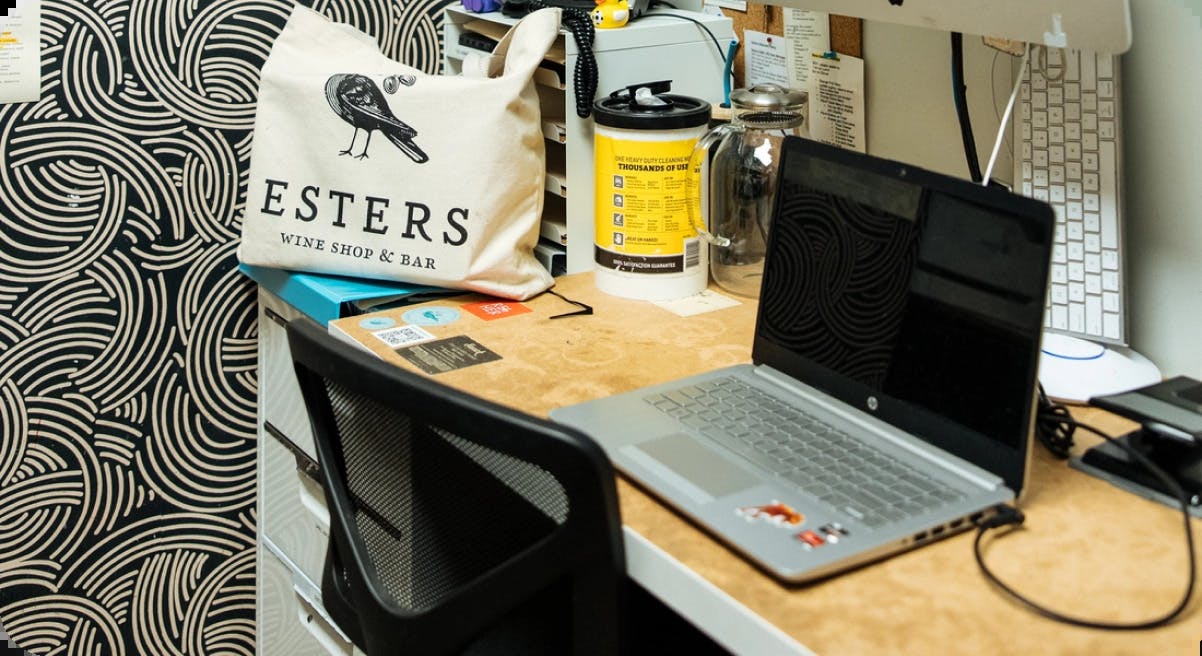
Ready to apply these ecommerce best practices in your restaurant's website?
While starting your own online ordering website can be challenging and a tad overwhelming, these best practices will help your restaurant optimise every step of the ecommerce funnel and help you not only get more direct online orders, but also create a loyal customer base for your restaurant that will keep coming back.